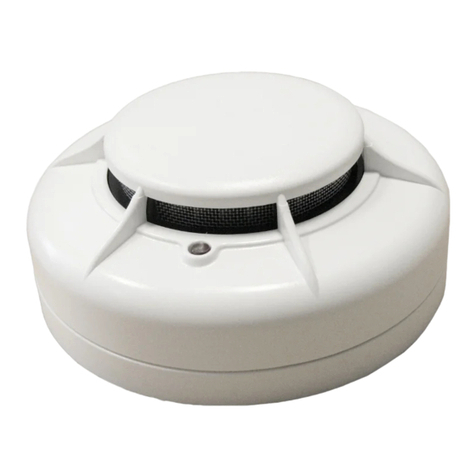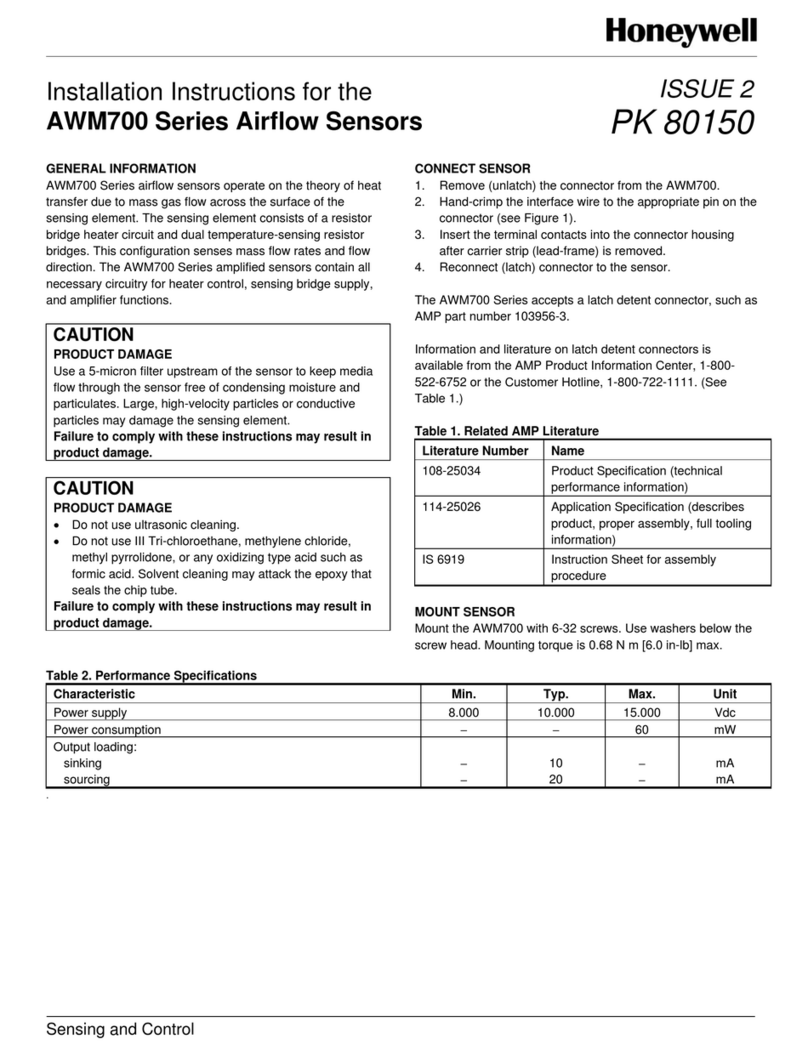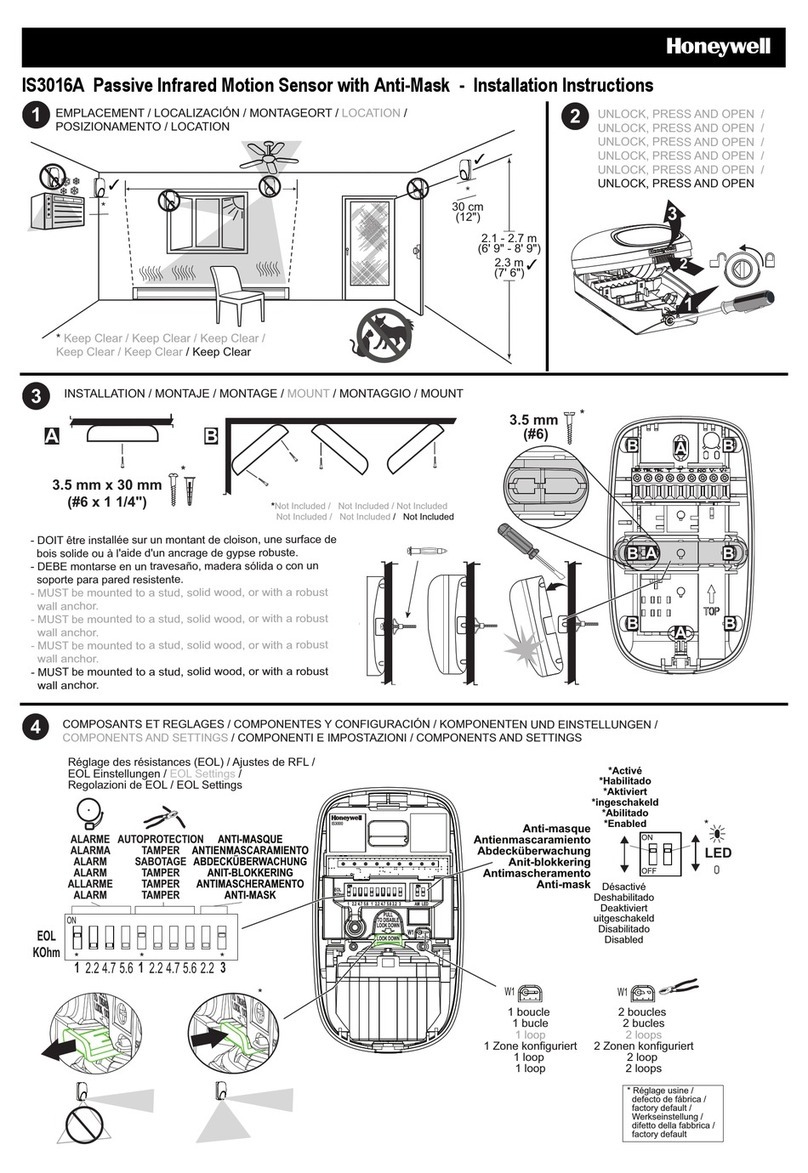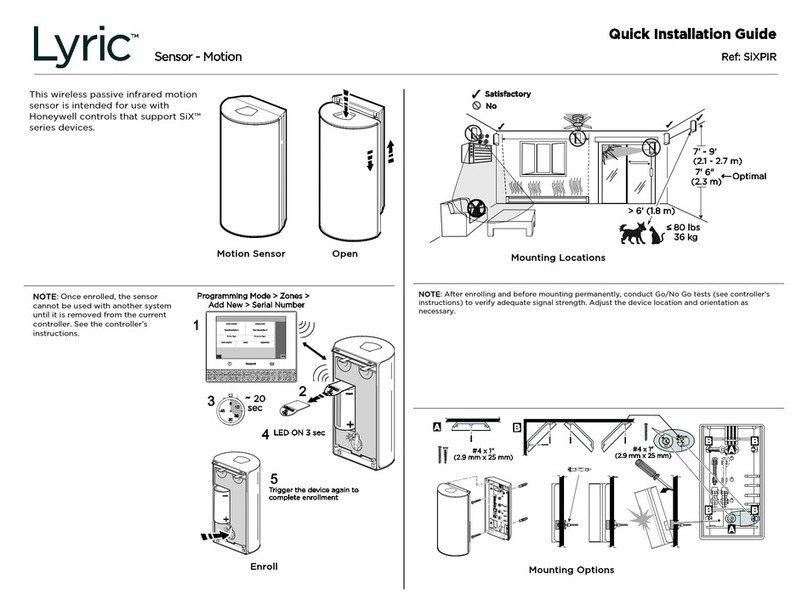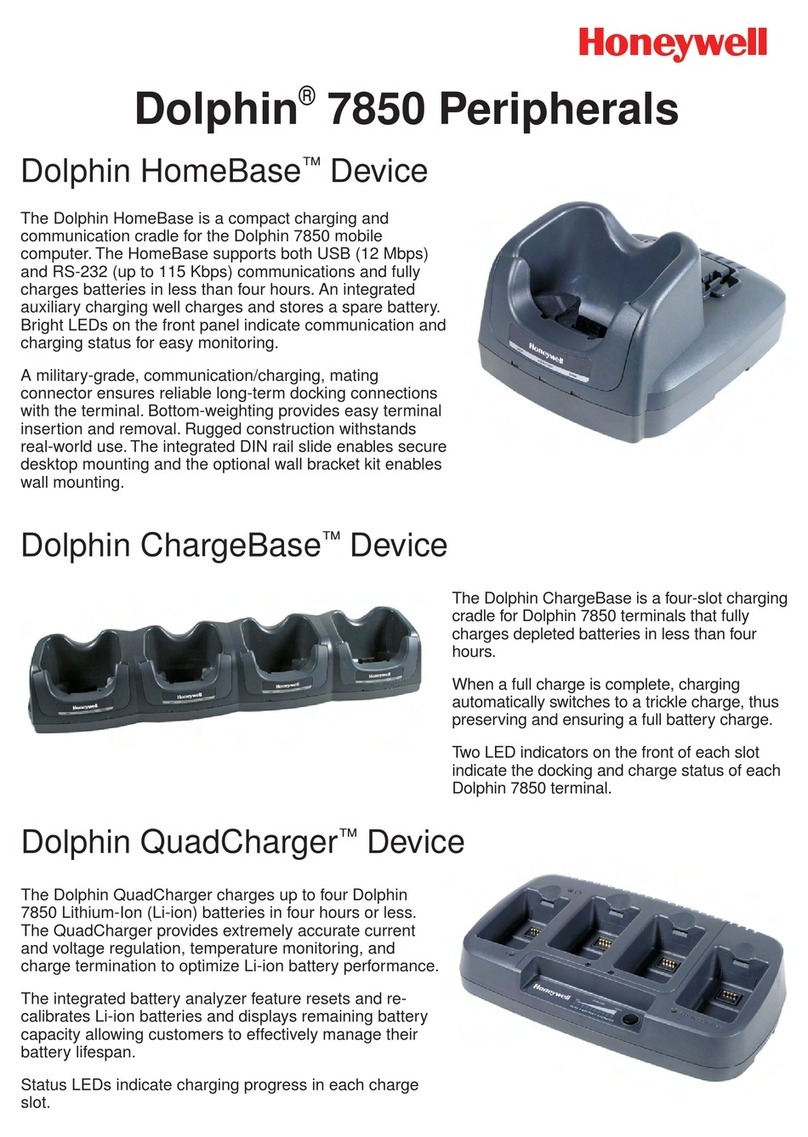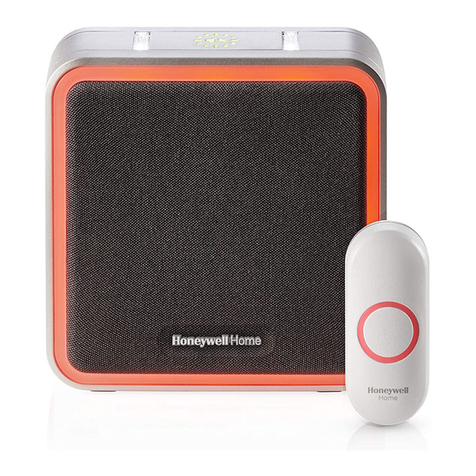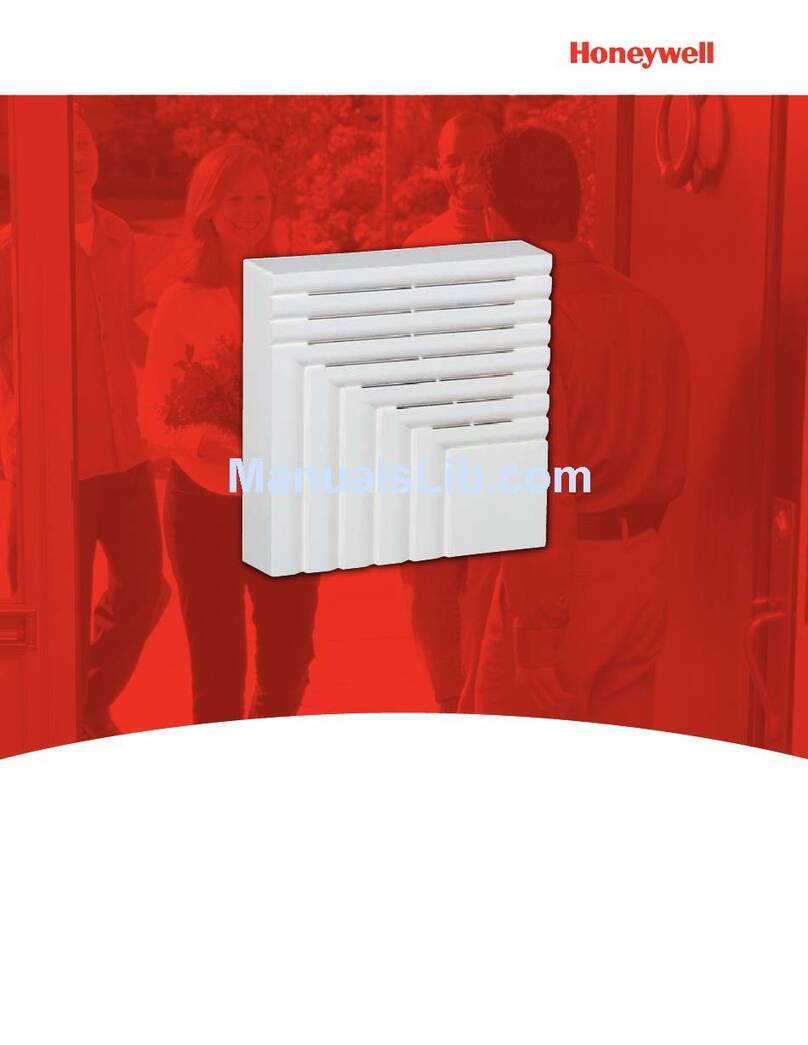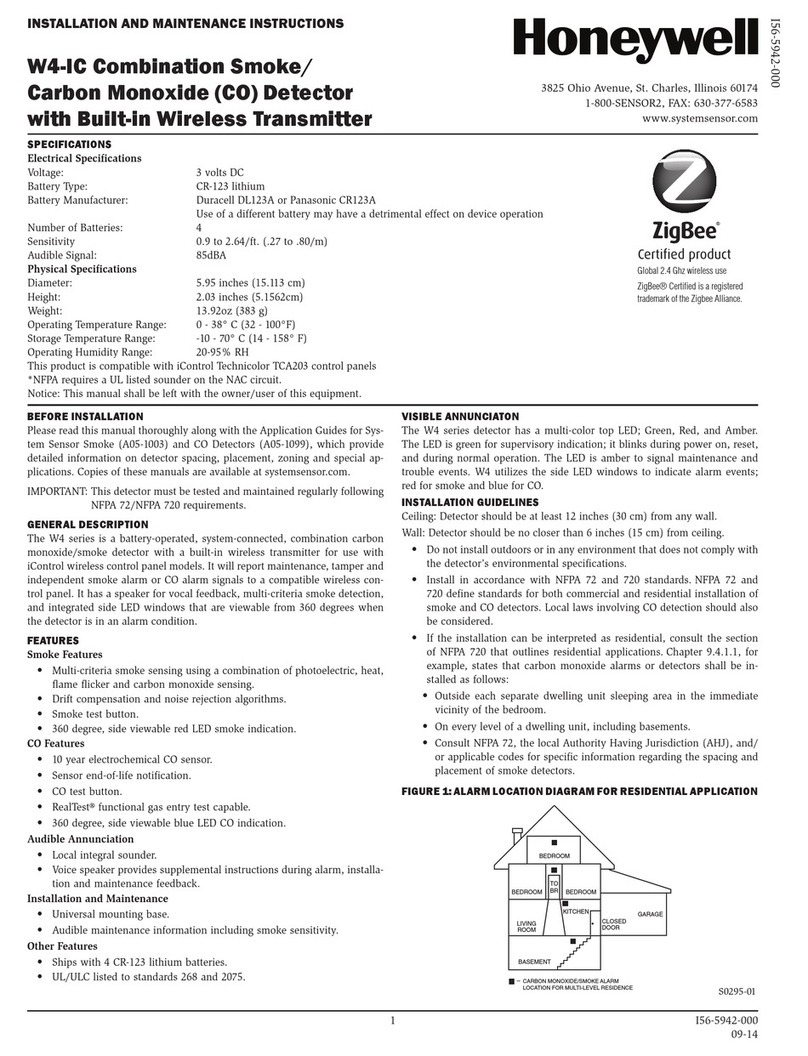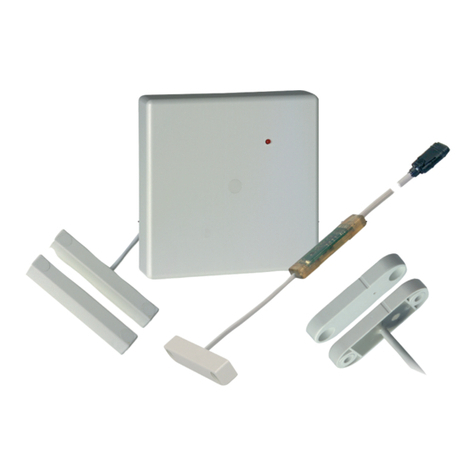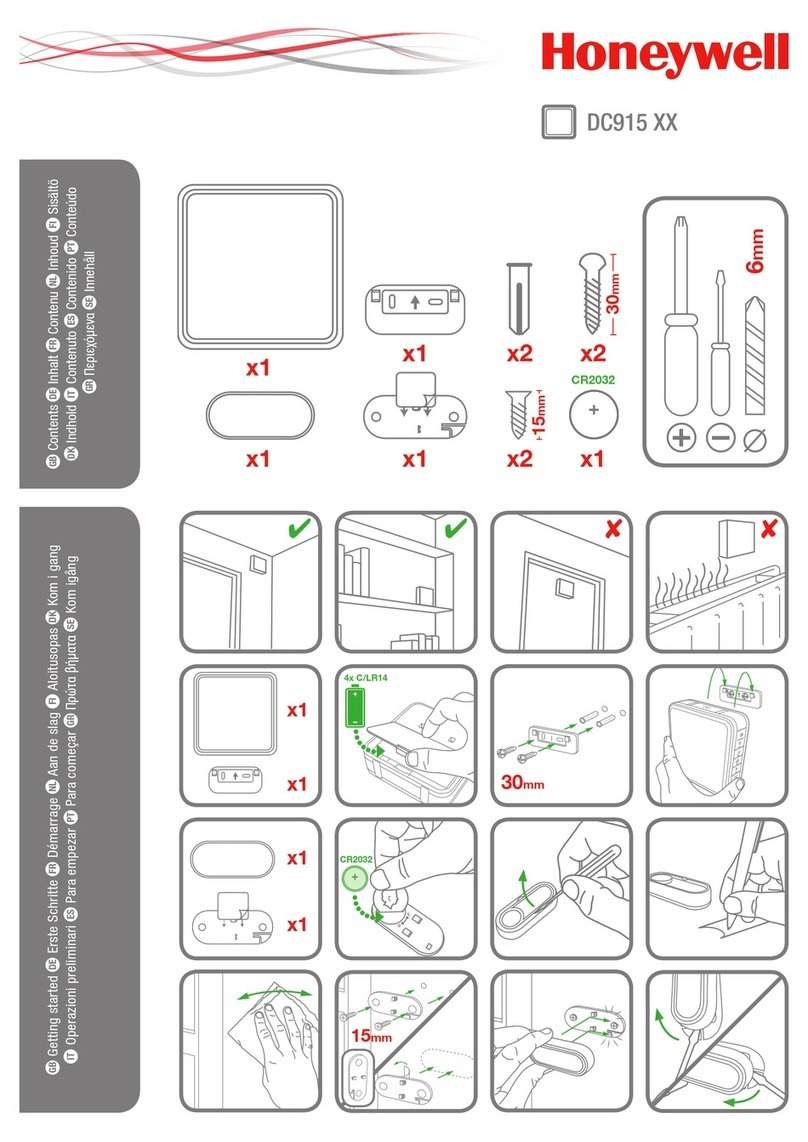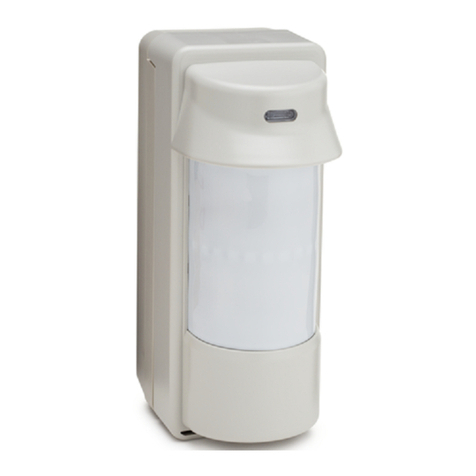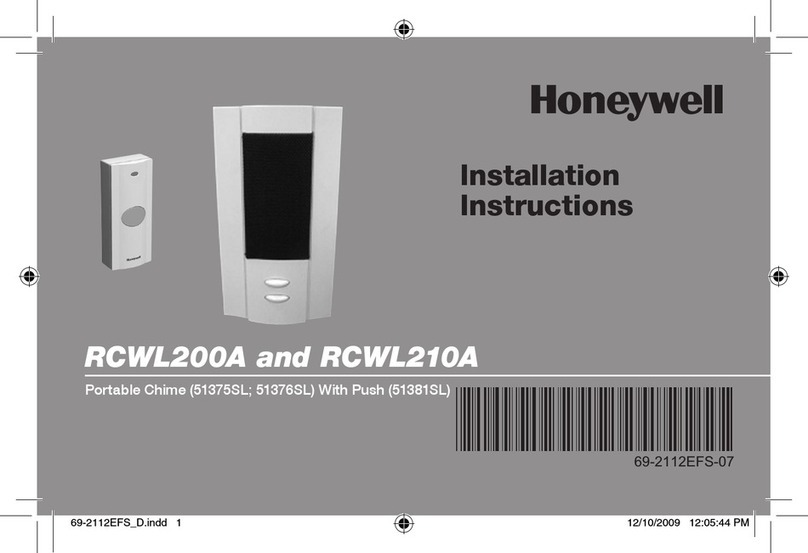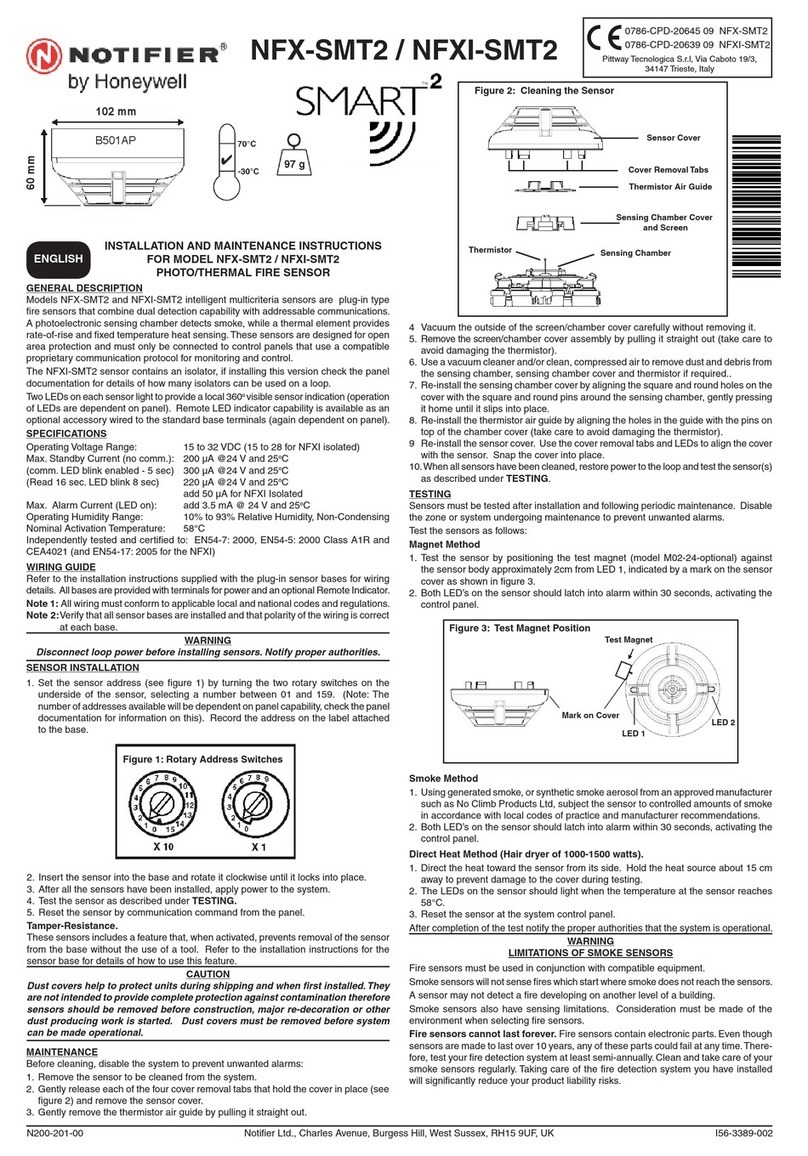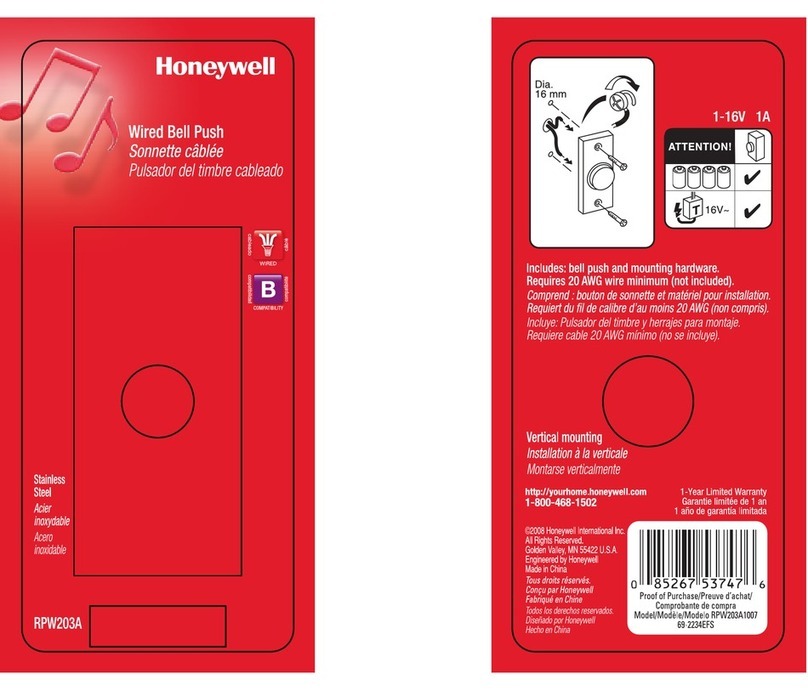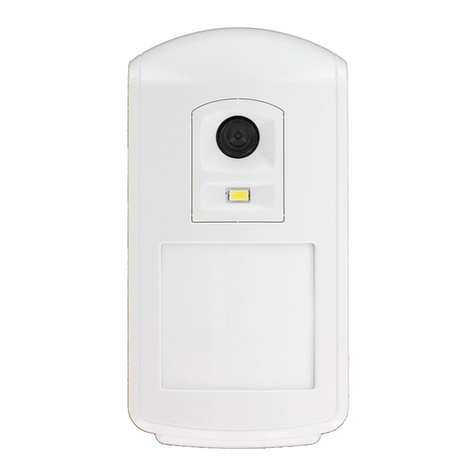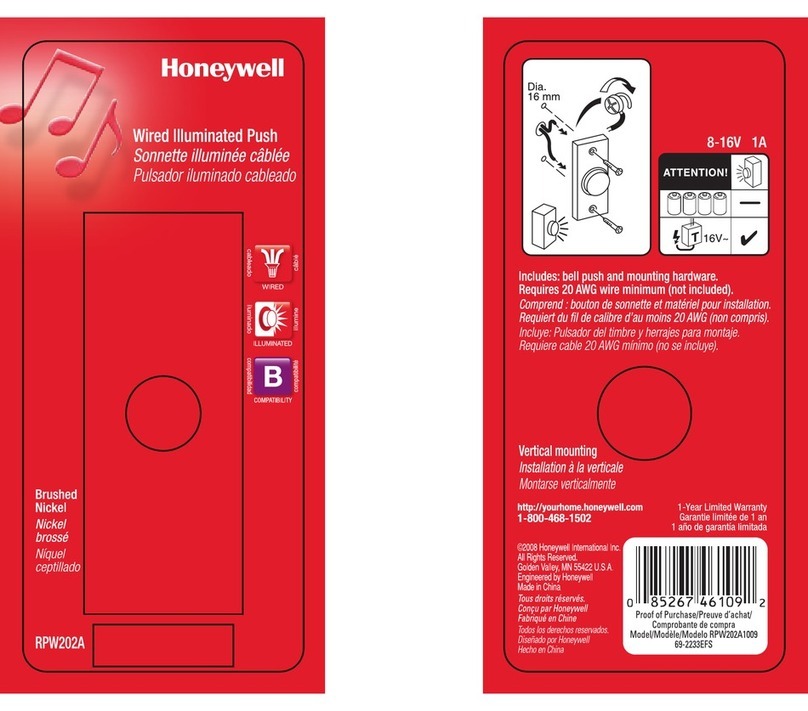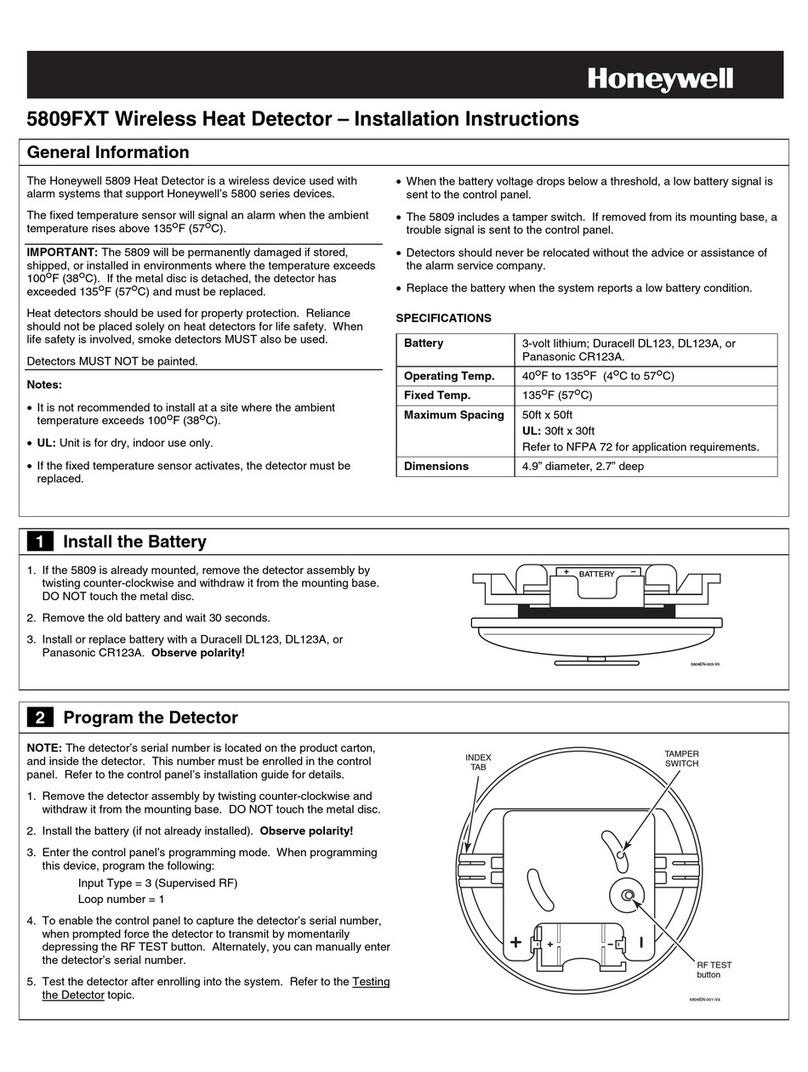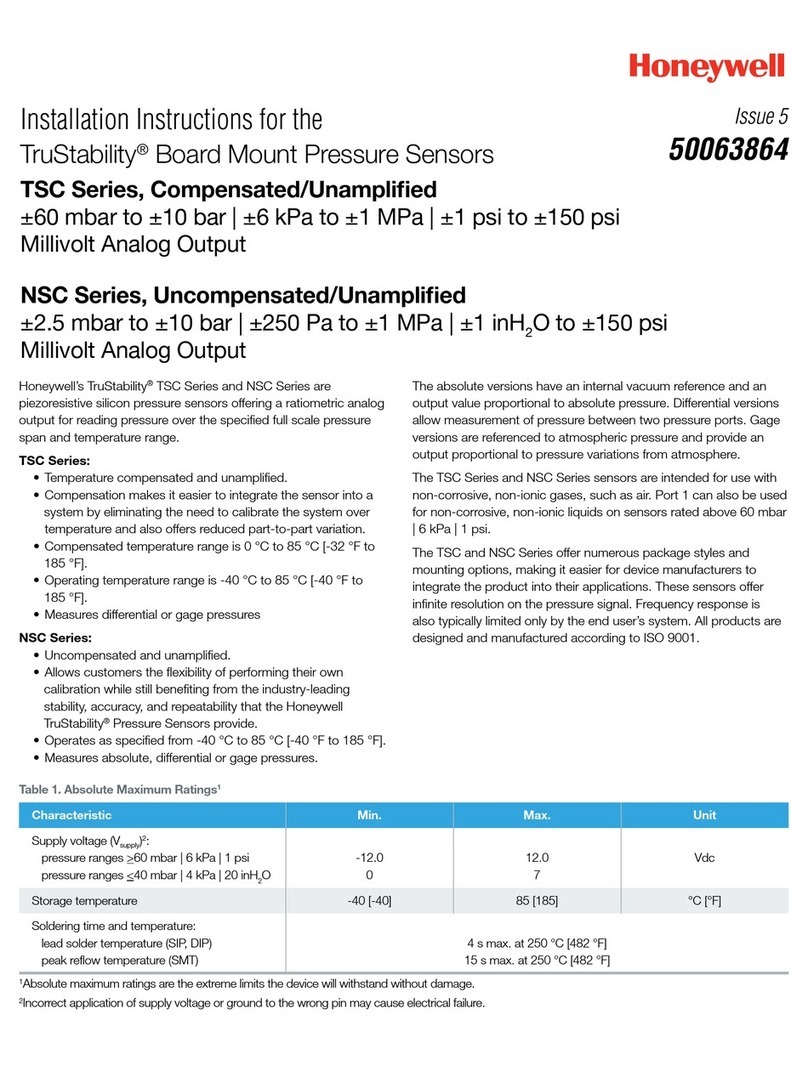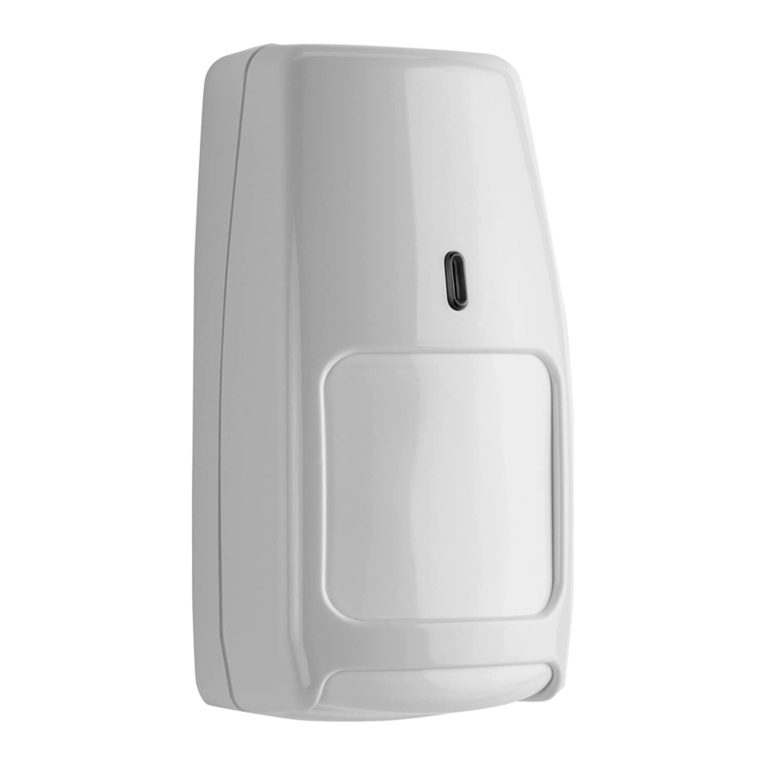
FP5000 INTRINSICALLY SAFE
TRANSMITTERS 008-0751-00, Rev. C
FP5000 Pressure Transmitter User Manual | sps.honeywell.com/ast 2
DESCRIPTION
The Honeywell Model FP5000 with
option code 2AR is an “Intrinsically
Safe” certified media-isolated
piezoresistive silicon pressure
transmitter, offering 4 mA to 20 mA
electrical output for reading pressure
over the specified full-scale pressure
span and temperature range. It is
compensated for sensor offset,
sensitivity, temperature effects,
and non-linearity to offer improved
thermal stability and accuracy.
Hastelloy® C276 and 316L stainless
steel wetted parts provide durability
with abrasive or corrosive media.
NORMAL USE
Although there are variations within
the series of sensors, the nominal
weight
of the assembly is approximately
5.3 oz [150 g]. High surface
temperatures can remain in place
and the unit should be checked
before removing the unit from
service if it was operated at high
temperatures. Suitable gloves are
recommended for handling the unit
under those conditions.
SPECIFIC CONDITIONS OF
USE
The FP5000 Pressure Sensor does
not withstand a 500 Vrms dielectric
strength test between the circuits
and the earth ground. This is due
to presence of transient protection
devices that activate above 33 Vdc
and protect the transmitter from
overvoltage damage. This is intended
behavior and must be taken into
account during installation.
GENERAL REQUIREMENTS
AND CAUTIONS
1. All electrical and pressure
connections should be
compatible with the model
specifications.
2. Installation should occur only
when input electrical power is off
and line pressure is at zero.
3. All products should be protected
from direct or continued
exposure to fluids at the
electrical connection to eliminate
possible deterioration of the
product’s electrical connection
and corrosion that will impede
product performance.
4. At no time should an object be
inserted into the pressure port or
pressed against the sensing area
to deflect the sensor (to test or
simulate pressure), as this may
result in permanent damage to
the sensing diaphragm.
5. Do not remove the transmitter
when it is under pressure, if it
is hot, or if it exposes harmful
gases.
